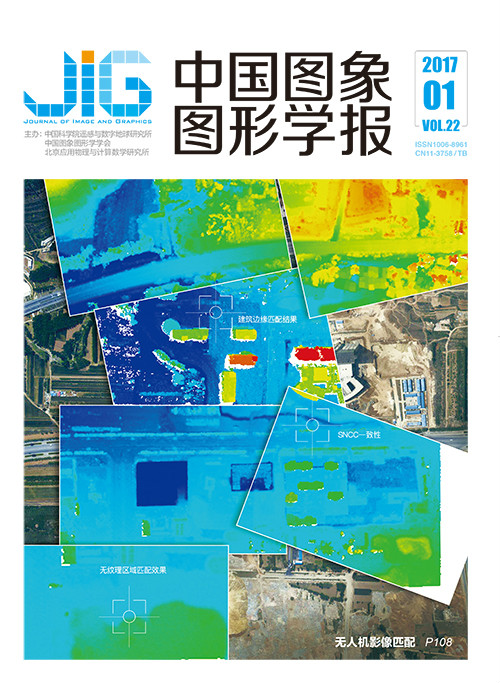
面向水下图像的质量评价方法
摘 要
目的 针对目前水下图像质量评价方法少和现有方法存在局限性等问题,提出一种无参考并且无需手工设计特征的水下图像质量评价方法。方法 提出的水下图像质量评价方法将深度学习网络框架与随机森林回归模型相结合,首先采用深度神经网络提取水下图像的特征;然后使用提取的特征和标定的水下图像质量分数训练回归模型;最终,利用训练好的回归模型预测水下图像的质量。结果 在本文收集的水下图像数据集和水下图像清晰化算法处理结果上评测本文方法,并与多种质量评价方法进行比较,其中包括预测结果与主观质量分数比较、水下图像清晰化结果评测比较、预测结果与主观质量分数相关性比较、鲁棒性比较等。主观实验结果表明本文的评价方法可以相对准确地给出符合人类视觉感知的水下图像质量分数,并且具有更好的鲁棒性。定量实验结果表明本文方法与其他方法相比,预测的图像质量分数与主观分数具有更高的相关性。结论 提出的水下图像质量评价方法无需参考图像,省去了手工设计的特征,充分利用了深度学习网络的学习和表征能力。本文方法的准确性较好,普适性和鲁棒性较高,预测的质量分数与人类视觉感知具有较高的一致性。本方法适用于原始的水下图像和水下图像清晰化算法的处理结果。
关键词
Quality assessment method for underwater images
Guo Jichang1, Li Chongyi1, Zhang Yan1,2, Gu Xiangyuan1(1.School of Electronic Information Engineering, Tianjin University, Tianjin 300072, China;2.School of Computer and Information Engineering, Tianjin Chengjian University, Tianjin 300384, China) Abstract
Objective A new underwater image quality assessment method with no-reference and no-handcrafted features is proposed in this study to address the lack of acknowledged methods for evaluating the performance of underwater images and the existing assessment methods with various limitations. Method The proposed assessment method is based on a deep learning net framework and random forest regression model. The very deep convolutional neural network is first used to extract image features. The extracted features and labeled underwater image data set are then employed to train the regression model. The trained regression model is finally used to predict the quality of underwater images. Result The proposed assessment method is tested and compared on the collected and labeled underwater image data set and the results of underwater image sharpness algorithms. The comparisons include the predicted results and subjective scores, the results of underwater image sharpness algorithms, the correlation between the predicted results and subjective scores, and robustness. Qualitative experiments demonstrate that the proposed method can relatively accurately output the image quality scores in accordance with human visual perception and has better robustness. Quantitative experiments demonstrate that the proposed method has higher correlation with the subjective quality scores when compared with several image quality assessment methods. Conclusion A new method for assessing the quality of underwater images is proposed. The reference image and handcrafted features are no longer required by utilizing the learning and representation ability of the deep learning net framework. The proposed assessment method is accurate, robust, and general. Moreover, the predicted quality scores are similar to the perception of the human visual system. The proposed method is suitable for original underwater images and the results of underwater image sharpness algorithms.
Keywords
underwater image no-reference image quality assessment deep learning human visual perception underwater image sharpness
|



 中国图象图形学报 │ 京ICP备05080539号-4 │ 本系统由
中国图象图形学报 │ 京ICP备05080539号-4 │ 本系统由